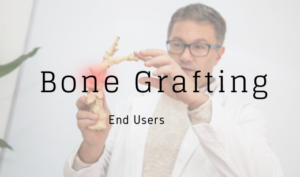Revision
Revision is the replacement of a prosthesis. This means that a prosthesis previously implanted within the body is removed and replaced by a replacement prosthesis. Compared to the initial operation revisions are often more complex and harder , because every revision involves the loss of healthy bone substance. Revision operations also are costlier for a satisfactory result. The most important goal is therefore to avoid revisions by employing a good surgery and using products with good (long-term) results. Unfortunately, it isn’t always possible to avoid revisions. There can also vary reasons for revisions and there is a distinction between septic or aseptic revision. If it is necessary to exchange an implant without confirmation of an infection—for example, aseptic—the cement isn’t necessarily removed completely. However, if the implant has loosened for septic reasons, the cement must be fully removed to clear an infection. within the present state of knowledge it’s easier to urge obviate cement than to release a well-anchored cement-free prosthesis from the bone site. Ultimately it is vital for the stability of the revised prosthesis to detect possible loosening of the initial implant early to be able to retain the utmost amount healthy bone as possible.
Bone Cement in Revision Surgeries
Bone cement has proven particularly useful because specific active substances, e.g. antibiotics, are often added to the powder component. The active substances are released locally after implant placement of the new joint, i.e. within the immediate vicinity of the new prosthesis and are confirmed to scale back the danger of infection. The antibiotics act against bacteria precisely at the location where they’re required within the open wound without subjecting the body generally to unnecessarily high antibiotic levels. This makes bone cement a contemporary drug delivery system that delivers the specified drugs on to the surgical site. The important factor isn’t what proportion active substance is within the cement matrix but what proportion of the active substance is really released locally. an excessive amount of active substance within the bone cement would actually be detrimental, because the mechanical stability of the fixed prosthesis is weakened by a high proportion of active substance within the cement. The local active substance levels of industrially manufactured bone cements that are formed by the utilization of bone cements that contain active substances are approximate (assuming that there’s no incompatibility) and are significantly below the clinical routine dosages for systemic single injections.
Bone Cement Imported by Morulaa

Morulaa Healthtech Pvt Ltd. is the licensed importer of Subiton.
Subiton, also known as Laboratorios SL, is an Argentine firm that has been a world leader in medical devices since 1957. These products are manufactured in environment-conscious facilities, serves over 110 nations. It has obtained certification of its products in India. Orthopedic implant manufacturers choose to provide the bone cement by buying them from major brands, usually, ones like Palacos, Simplex, and Subiton, while some leave the decision to the distributors or dealers. In India, distributors usually provide bone cement along with orthopedic implants to hospitals.
Joint Spacers
Antibiotic joint spacers are devices that temporarily treat joints after arthroplasty surgery and bones with bacterial infections.
The two-stage revision of total knee arthroscopy is done to remove the infection and also simultaneously producing healthy tissue ready for the new implant to be fixed. The implant present is removed, the bone joint is cleaned and then the temporary spacer is fixed.
Subiton Hip Spacer
Subiton Spacer is used as a temporary solution to help the healing process of prosthetic components in a joint that is infected. The benefit of using the spacer is that increases patient’s quality of life during their treatment. It also helps to make revision surgeries while setting the prosthesis and continued throughout the patient’s recovery time.
Advantages
- Efficient antibiotic release.
- The spacer has a nucleus that is metallic which makes sure it resists physiological mechanical stress.
- Subiton Hip spacer limits the femur movement which is useful in later stages of revision procedures.
- Early patient recovery due to ease of movement.
Subiton Knee Spacer
Knee Spacer just like hip spacer serves the same purpose but in the knee. It also acts as a temporary solution to remove bacterial infections and help in the revision procedures.
Advantages
- Efficient antibiotic release.
- Keeps space together.
- Allows joint movement to improve the well-being of patients.
- Revision is easier and prevents immobilization adherence
Conclusion:
The above article deals with bone cement, the revision surgeries and information on the subiton product. Subiton products are of high-quality, provided at a competitive price. Morulaa’s imported cement is well suited to give stability to implants used in total knee replacement and total hip replacement surgeries.
This article is intended to give product information on Subiton bone cement. To know more about the product details, brochure please visit products.morulaa.com.
Morulaa is a turnkey solution provider with an in-house Regulatory Consultancy team to conduct registrations of medical devices. Morulaa provides high-quality and professional services for Regulatory Consultancy and we aim at developing long-term relationships for the Indian Market.






